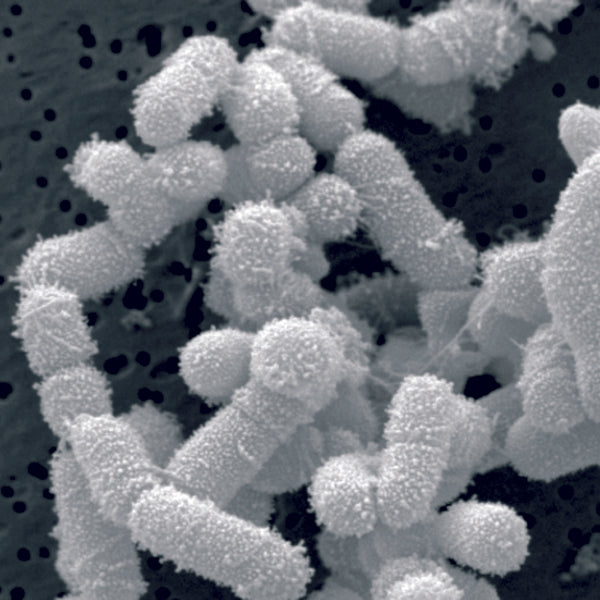Photo Above: Lactobacillus sakei
Every year we learn more and more about our sinuses and how important they are to each of us. Check out these fun facts we found fascinating!
1) Many animals also have sinuses, including most mammals, birds, and crocodilians (e.g. alligators). Even some dinosaurs had sinuses.
2) Humans have a nasal cycle, in which airflow is greater in one nostril than in the other, and the nostril with greater airflow shifts between left and right over time. This cycle is faster when we are awake (about 1.5 to 3 hours long) and slower when asleep (3.5 to 6 hours long).
3) The sinuses are lined with cilia, which steadily beat 700 to 800 times per minute. The cilia deep in the nasal passages keep beating for hours after death, but slow down over time, and usually end by 16 to 18 hours after death.
4) While some adults are missing some sinuses (e.g., about 5% of people are missing the frontal sinuses), it is extremely rare to be missing all 4 pairs of sinuses.
5) Cancers of the sinuses are very rare - less than 1% of cancers. It is usually associated with long-term workplace exposures to wood dust (furniture makers, sawmill workers) and leather dust (leather footwear workers).
6) The sinuses produce large amounts of nitric oxide, which is antimicrobial (a nasal defense against invading microorganisms). It is also transported to the lungs with every breath, where it dilates blood vessels.
7) The nitric oxide produced by the sinuses can be measured in every nasally exhaled breath. When a person hums, it results in greatly increased levels of nitric oxide in air that is exhaled.
8) Beneficial, benign, and what we usually think of as harmful microbes (fungi, bacteria, viruses) coexist in complex communities in the sinuses. This is normal.
9) Some people (both healthy and sick) also have archaea living in their sinuses. Archaea are single celled organisms with a unique cell membrane, very little is known about them, and it is unknown what they are doing there.
10) Microbes found in all sinuses (core microbes) are the same throughout the world, with the most prevalent being Corynebacterium and Staphylococcus species.
11) Both healthy persons and those with chronic sinusitis have biofilms in the sinuses, but in healthy people they are smaller, don’t cause an inflammatory response, and are kept in check.
12) The microbes living in your sinuses change over your lifetime, with the biggest changes occurring in the first year of life.
13) The infant picks up its first bacteria during birth, so at first the infant’s nasal cavity microbiome resembles the mother’s vaginal microbiome (if a vaginal delivery) or skin microbiome (if a C-section delivery).
14) Some bacteria are considered keystone bacteria - present in tiny amounts, but have large effects. Lactobacillus sakei (in Lanto Sinus) is one of those.


Leave a comment: